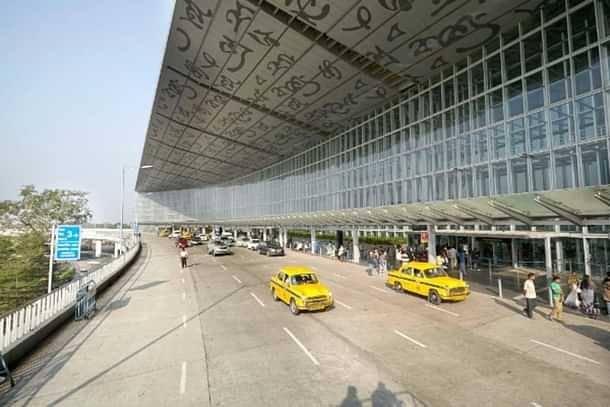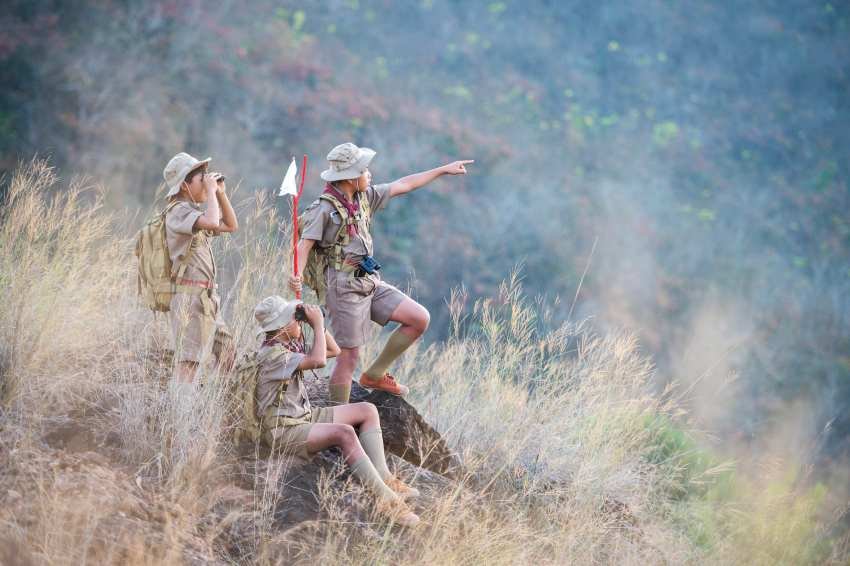Travel Trends
Terminal transformation at Kolkata Airport

Netaji Subhas Chandra Bose International (NSCBI) Airport in Kolkata is undergoing a major expansion. The Airports Authority of India plans to demolish the old domestic terminal and replace it with a new U-shaped international terminal. This is in response to rising passenger numbers and the need for increased capacity. The current integrated terminal already handles 26 million passengers annually and is expected to reach its full limit by 2025–26.
Once the new international terminal is completed, the current terminal will be used exclusively for domestic flights. Its capacity will be increased to accommodate 34 million domestic passengers each year. The new international terminal will initially add capacity for 2 million more international travellers, with the possibility of phased expansion in the future. In the meantime, 5,600 square meters are being added to the current terminal to temporarily increase its capacity from 26 to 28 million passengers annually.
The old domestic terminal, constructed in 1995, has been largely unused since 2013 except during emergencies. It served as a COVID-19 quarantine facility and was used for Haj operations. Full demolition of the structure is expected by early 2026, clearing space for the new terminal construction and modern upgrades.
Once the expansion is complete, NSCBI Airport will be able to handle 45 million passengers each year—36 million domestic and 9 million international. The project is part of a broader effort to modernise the airport, improve the travel experience, and support Kolkata’s growing importance as a regional and international hub.
Destinations & Things To Do
This Hidden Beach in India Glows at Night-But Only in One Secret Season

The coastline of India, while vast and diverse, holds many untold natural wonders. While most beaches beckon with golden sands and crashing waves under the sun, one particular stretch in Karnataka transforms into an otherworldly spectacle after dusk. This isn’t just about a beautiful sunset; it’s about a rare, mesmerizing phenomenon that turns the ocean into a canvas of shimmering, neon-blue light. Welcome to Mattu Beach, a hidden gem that glows at night, but only if you know its secret season.
Chasing Elusive Glows
Many travelers dream of witnessing bioluminescent beaches, those magical shores where the waves sparkle with an ethereal light. However, such phenomena are often unpredictable, fleeting, and require specific conditions. This can lead to disappointment for those who journey across continents only to find the “light show” isn’t happening. The challenge lies in knowing precisely when and where to find this natural marvel, especially in a region as vast as India.
The Science of the Sparkle: Dinoflagellates in Bloom
The dazzling blue glow at Mattu Beach isn’t magic; it’s science. This natural light emission, known as bioluminescence, is primarily caused by a dense bloom of microscopic marine organisms called dinoflagellates, specifically Noctiluca scintillans, often referred to as “sea sparkle.” These tiny organisms produce light through a biochemical reaction when agitated—by a breaking wave, a disturbance from a boat, or even the gentle movement of sand. The energy from this reaction is released as visible light, creating the mesmerizing blue-green shimmer that transforms the shoreline into a living light show. This phenomenon thrives under particular conditions, including specific water temperatures and nutrient levels, which contribute to the dinoflagellates’ proliferation.
Unlocking Mattu’s Secret Season
While bioluminescence can occur sporadically in various coastal areas, Mattu Beach near Udupi, Karnataka, has gained recognition for its relatively consistent displays, especially during a particular “secret” season. Based on recent observations and local insights, the best time to witness the glowing waters at Mattu Beach is typically between June and September, during the monsoon and post-monsoon months. This period often brings the ideal combination of nutrient-rich waters and specific temperatures that encourage the dense bloom of bioluminescent plankton. The glow is most visible on moonless nights, when the darkness enhances the shimmering light produced by these microscopic organisms.
My own fascination with discovering such natural wonders led me to deep dive into this phenomenon. A friend, a marine biology enthusiast who frequents the Karnataka coast, shared tales of these luminous nights. While predicting natural events is inherently tricky, the consistent reports during the monsoon period from locals and environmental groups offered a crucial tactical insight. It’s a testament to nature’s timing – a period often associated with heavy rains reveals this delicate, stunning display.
To maximize your chances, plan your visit during the new moon phase within this window, ensuring the darkest possible skies. Mattu Beach itself is a tranquil, less-crowded destination, making it ideal for experiencing this delicate spectacle away from urban light pollution. The approach road can be dark, so arrive prepared, and remember that patience is key.
A Journey into the Unseen
Witnessing Mattu Beach glow under a dark sky is more than just a visual treat; it’s a profound experience that connects you with the hidden wonders of our planet. It’s a reminder that even in seemingly ordinary places, extraordinary beauty can emerge when conditions align. This tactical insight into Mattu’s secret season offers travelers a genuine opportunity to experience one of India’s most breathtaking, yet elusive, natural phenomena. It’s about being in the right place at the right time to see the ocean quite literally come alive with light.
Before You Go:
If you’re planning to catch the beach when it glows, here’s a quiet travel hack: some travelers now use cheQin.ai where instead of booking instantly, you post what you need and nearby hotels bargain in real time to offer their best rates. No hunting through listings, just a little back-and-forth magic, kind of like the beach itself.
Travel Trends
Cho La in Sikkim to Open for Battlefield Tourism Along with Other Historic Destinations Like Normandy, Gettysburg, and Verdun: Know More About The New Trend

Saturday, July 26, 2025
Deep in the heart of Sikkim, a state in India’s northeastern frontier, Cho La is poised to become the torch-bearer of a different kind of tourism — battlefield tourism. As the Indian administration is providing new efforts to develop Cho La as well as its other strategic locations like Doklam trijunction to a possible tourist destination destination the move is expected to further add to the history and mystery of the region. This action is part of a broader trend of battlefield tourism that is gaining popularity worldwide, from the fields of Normandy, France, where fighting raged during World War II, to the hallowed ground of Gettysburg in the United States.
Cho La and the Game Theory of Doklam
Cho La – a scenic but historically significant place in Sikkim – is one of the new sites for India’s battlefield tourism project. Located close to the Doklam Plateau – the site of a 2017 face-off between Indian and Chinese soldiers – which is the trijunction between India, China and Bhutan, this spot had previously seen high tension between the two sides in 2017. To tourists and history geeks who dream of seeing places defined by armed conflict, the decision to open Cho La and its vicinity is a big deal.
For decades, Cho La has been as remote and tightly controlled as Nathu La. But India’s signing off on tourism to the region is a game-changing move that presents us with an opportunity to explore the military dimensions of the area like never before. In continuation of the same, the Sikkim government is collaborating with the Indian Army to create all required infrastructure and facilities to make the stay safe and comfortable. Travel permits will be issued to tourists for the trijunction area on the Indian side which they can carry while travelling to Doklam.
Sikkim and Battlefield Tourism
This change is certain to be widely heralded by the tourism industry in Sikkim. Sikkim, referred to more often for its magnificent landscape and calm ambiance, has always been the wish-list of nature lovers and trekkers. It will not be the worst if the state slightly livens up the tourism with a layer of military history. It would be a draw for more than just tourists, but international visitors who want to learn about the darker, more reflective side of history.
The Sikkim government under Additional Chief Secretary CS Rao is approaching this new venture cautiously. A maximum of 30 vehicles will initially be allowed daily on the Doklam, which can be increased to 50 “based on the condition of the roads and clearance” by the army. It’s a measured act that will give them more confidence in protecting the area, while tourists will also be able to visit and explore this important site in safety.
The direct financial relief that will come from footfall in the region is only a tip of the iceberg and is an added economic benefit – battlefield tourism will also help in publicising the geostrategic significance of the region. Converting these important places into tourist destinations will not only add to the tourism infrastructure of Sikkim but also render knowledge on the strategic relevance of the region.
Global Trends in Battlefield Tourism
Cho La and the Doklam trijunction will soon add to the growing list of battlefield tourism, but it is not exclusive. All over the world places such as Normandy in France, Gettysburg in the U.S., Verdun in France, the Gallipoli Peninsula in Turkey and the Kokoda Trail in Papua New Guinea have long lured tourists interested in war history and how it affects nations and people.
Millions of visitors still flock to Normandy, site of the famous D-Day landings of World War II. Likewise, Gettysburg, in the U.S., is an essential site for those interested in the Civil War, and it is still delineated by its preserved battlefield and vivid history. Verdun, site of one of the longest and bloodiest battles of World War I, is still a symbol of sacrifice and endurance.
The boom in battlefield tourism gives countries a means of keeping the memory of events alive while giving visitors a way to experience past events more personally. In Sikkim, Cho La’s opening is likely to become something of a microcosm of this worldwide trend, introducing a new generation to the history of the region while offering the world a peek at India’s military heritage.
AN ECLECTIC BLEND OF HISTORY AND TOURISM
What distinguishes battlefield tourism from other forms of heritage tourism is that it is capable of interweaving learning and contemplation within the more customary purvey of travel, that of pleasure and enjoyment. Not only are visitors exploring a region’s natural beauty, but they are also invited to learn about and absorb its history.
That blend of military history with natural allure is heady stuff to Sikkim. For not only will the more tourists that come to these sites, also strengthen the preservation of the heritage of the region, but the message of yesterday will be remembered for tomorrow. That this will be both safe and also great experiences is set in stone because the Indian Army is instrumental in developing the infrastructure around these sites.
Military Tourism on the Rise Worldwide
The fact that Cho La is included in India’s battlefield tourism plans reflects a trend that will likely go beyond the borders of Sikkim. Several countries are reviewing their policies along similar lines as they recognise the power of historical battlefields as vehicles to involve ordinary people with history in the most compelling manner. In other cases, battlefield tourism is being fused with other types of tourism, such as nature, adventure and even wellness tourism, allowing the sites to be visited by gradual distances of the population.
That’s nothing though next to the number of those who make the pilgrimage along the Kokoda Trail in Australia which marks a battle in WWII fought between the Japanese and the Allies. The Turkish Gallipoli Peninsula is an example of how battlefield tourism is now an integral part of a nation’s tourism offering, especially for tourists coming to try to grasp the horror of World War I.
ACROSS the world, war zones claim the lives of thousands of people each year – with more than 400 killed last year in the first half of 2014 alone. Cho La and wider battlefield tourism in Sikkim are still at an embryonic stage but their growth potential is huge. With a revival of interest in world military history, including Sikkim within this movement is a pertinent move and will appeal not just to the growing number of people interested in India’s history, but with tourists from all over the world that want a historical experience right from the inside.
Looking Forward
The implications of battlefield tourism both in Sikkim and at large, are likely to be significant. And as battlefield tourism opens itself up to even more destinations, a new generation of traveler will soon be stepping on the same hallowed battlefields where history was forged. But for Sikkim, this is just the start of a dawn for the state and there’s much in the offing in terms of metamorphism of the state’s tourism industry.
In the weeks ahead, those who traverse Cho La as travelers will be more than tourists to a scenic destination — they will find themselves walking on a battlefield, where the past is not even smoke but the memory of a smoke that still lingers in the air. With proper planning by the government of Sikkim and the Indian Army, this initiative may also provide tourists a glimpse of history that shaped the region.
The collaboration also represents an important departure in the way military history is viewed — not as a dull distant memory, but a vivid, living, and breathing reality that we continue to explore. See page 33 for more information Through battlefield tourism the past is brought to new life in vivid ways allowing future generations to make sense and learning to value the sacrifices that have been made in the name of peace and security.
Travel Trends
Now, domestic travel grows among young Japanese as Overseas Trips Become Costlier and Less Accessible

Saturday, July 26, 2025
Apparently, though, not so among their youngest citizens, with a new study showing that only 17.5% of young Japanese adults hold a passport, in stark contrast to worldwide travel statistics. This phenomenon is part of a broader trend among younger generations in Japan that prefer to travel domestically rather than internationally, a combination of a weakened yen, increased flight costs and security concerns overseas have all caused the growing trend. This new trend is having an effect on Japan’s outbound travel, but at the same time bringing changes to the travel industry in Japan, more and more people are now deciding to look around Japan instead of going abroad.
The study, which was done using the new travel app, compared passport ownership in Japan in other major developed economies and showed that countries including South Korea, the United States and Taiwan have far higher percentages of passport holders. This disparity highlights young Japanese people’s reluctance to travel abroad at a time when travel abroad has a tradition in Japan.
Overseas leisure travel affected by weak yen and increasing flight charges
Subtle messages are being spread by young Japanese travelers that the era of traveling abroad among Japanese travelers is over and that they won’t be traveling abroad. One of the reasons for that is the weak yen. With the yen tumbling further relative to major currencies, travel abroad has just got a lot more expensive for the Japanese people. The cost of travel overseas already very expensive with airfare, accommodations, and other expenses has only gotten more expensive with the fall of the yen. Yet for a lot of younger Japanese, it means less incentive to travel the world when there are cheap alternatives at home.
Increasing flight prices have made things worse. The airline industry has been challenged by increasing fuel prices and other financial headwinds, and international ticket prices have gone higher. For young people, many of whom spend gap years or time abroad on a budget, flight costs can be the most significant barrier. Instead, domestic planes and trains in Japan, even with the effective but dated Shinkansen (bullet train) system, provide a more economical and accessible alternative.
Japan’s weakening yen has sapped purchasing power and made travel costlier for its nationals, and this has prompted more Japanese to simply travel at home, where costs are more manageable and predictable. Consequently, there are many hot domestic spots, such as Okinawa, Hokkaido, and Kyoto, thanks to this travel style transition.
Safety Concerns and Implications for International Travel
Besides economy, also safety concerns overseas are hindering the travel of young Japanese. With global happenings such as political unrest, natural disasters, and lingering worries of COVID-19, there are now certain international destinations that might not seem as appealing for trekkers. Passengers may be discouraged by media reporting of instability or public health risks, particularly by the younger generation that are more risk adverse on the global safety situation.
These worries are made worse by the lack of clarity about travel bans and health policies in many nations. So even as international borders have begun to reopen, the shifting nature of travel regulations, the threat of new restrictions and differing health conditions can make travel overseas a seemingly unpredictable and risky proposition.
Moreover, a relatively high sense of safety and public health here in Japan, even in the age of COVID-19, can also make travelling domestically seem a more safe and hassle-free option. Japan’s stable infrastructure and rigorous safety policies make it possible for locals to take domestic trips without experiencing the uncertainty and hassle of international travel.
Domestic Tourism Development and Regional Economic Revival
Local tourism sees significant boom on the back of young Japanese turning their eyes to domestic travel. Japan’s famous for its rich cultural history, dramatic scenery and exciting urban centers, and now its culture and landscape are attracting the Japanese themselves in record numbers. Even places like Hokkaido’s snow capped mountains, Kyoto’s ancient temples and Okinawa’s tropical beaches are being more widely visited by Japanese tourists.
Growth in domestic tourism is helping to spread the wealth of tourism income around Japan more equally. Historically, international visitors to Japan have been largely concentrated in big cities such as Tokyo and Osaka. But as more Japanese nationals begin travel within the country, regions once left in the shadows have begun experiencing a tourism boom. The result has been rural economic growth, as more people visit small towns, national parks and historic sites that often are outside the reach of international travelers.
Or, for that matter, domestic tourism has sparked new local travel trends. For example, numerous young Japanese voyagers are looking to become immersed in culture experiences, namely, check in at a ryokan, participating in a local gastronomic tour, hiking in rural Japan. This trend promotes the local economy by stimulating spending at small businesses, such as restaurants, local shops and regional tour companies.
The government also moved to spur domestic tourism, with campaigns such as the Go To Travel initiative, offering discounts to Japanese who travel within the country. These initiatives have been crucial in keeping the tourism at bay during the challenging time of economic uncertainty while people have been motivated to get to know ideas, regions and resources in their own backyards.
What Japan’s New Tourism Agency Should Do
Although people are anxious or financially constrained toward travelling overseas, the domestic tourist market is full of potential for Japan. The nation has an impressive transportation network (best known for the Shinkansen rail network and cheap flights) so citizens can experience a new area without traveling abroad. While attitudes have been shaped by the pandemic, continued economic recovery and increased safety and security could lead young Japanese to venture overseas once more.
But in the meantime, domestic tourism continues to dominate Japan’s tourism landscape. As young people travel around the country to see its fascinating natural beauty and cultural diversity, the tourism industry is going to keep getting bigger, no matter what problems crop up with international travel. Given the rising interest in local destinations, Japan’s tourism industry is poised to make a speedy recovery and do very well in the years to come.
With young Japanese increasingly favoring the pleasures of domestic travel, the tourism in Japan for the future will most likely be about how to fashion memorable domestic travel experiences capable of competing with the attractions of foreign lands. It can do so by devoting itself to sustainability and accessibility and, in the process, make sure that its tourism market stays resilient, varied and relevant to a changing resident population.
(Source: Japan Tourism.)
Tags: apan, domestic tourism Japan, flight costs Japan, Hokkaido, Japan outbound travel decline, Japan passport ownership, Japan tourism industry 2025, Japanese domestic travel, Japanese tourism trends, Japanese youth travel preferences, Kyoto, okinawa, Osaka, Tokyo, weak yen impact on travel, young Japanese travel habits
-

 Brand Stories6 days ago
Brand Stories6 days agoBloom Hotels: A Modern Vision of Hospitality Redefining Travel
-

 Brand Stories23 hours ago
Brand Stories23 hours agoCheQin.ai sets a new standard for hotel booking with its AI capabilities: empowering travellers to bargain, choose the best, and book with clarity.
-

 Destinations & Things To Do7 days ago
Destinations & Things To Do7 days agoUntouched Destinations: Stunning Hidden Gems You Must Visit
-

 AI in Travel7 days ago
AI in Travel7 days agoAI Travel Revolution: Must-Have Guide to the Best Experience
-

 Brand Stories3 weeks ago
Brand Stories3 weeks agoVoice AI Startup ElevenLabs Plans to Add Hubs Around the World
-

 Brand Stories2 weeks ago
Brand Stories2 weeks agoHow Elon Musk’s rogue Grok chatbot became a cautionary AI tale
-

 Asia Travel Pulse3 weeks ago
Asia Travel Pulse3 weeks agoLooking For Adventure In Asia? Here Are 7 Epic Destinations You Need To Experience At Least Once – Zee News
-

 Destinations & Things To Do19 hours ago
Destinations & Things To Do19 hours agoThis Hidden Beach in India Glows at Night-But Only in One Secret Season
-

 AI in Travel3 weeks ago
AI in Travel3 weeks ago‘Will AI take my job?’ A trip to a Beijing fortune-telling bar to see what lies ahead | China
-

 Brand Stories3 weeks ago
Brand Stories3 weeks agoChatGPT — the last of the great romantics









You must be logged in to post a comment Login